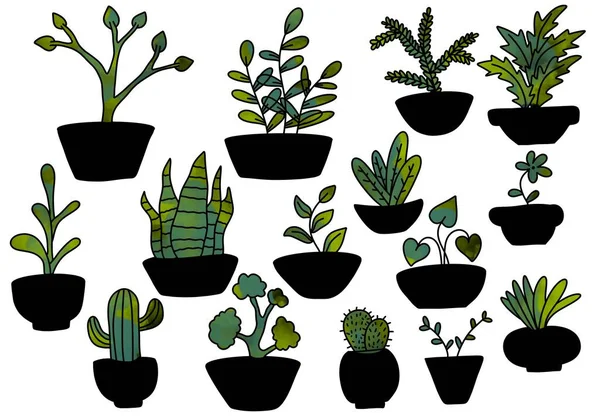
Select plant varieties
Choosing a crop variety is one of the important factors that determine the yield and quality of the crop. This decision requires a deep understanding of environmental factors, market demand, as well as the growth characteristics of each type of plant. This article will provide farmers with comprehensive information to make the most appropriate choice for their agricultural cultivation.
1. Why is choosing a crop variety important?

Choosing the right crop variety can help farmers achieve:
- High yield: Crop varieties suitable for soil and climate conditions will grow strongly and produce high yields.
- Product quality: Varieties of varieties affect product quality such as size, color, taste, and storage ability.
- Cost savings: Disease-resistant varieties that require little fertilizer and irrigation can help farmers save costs.
- Adaptation to climate change: Choosing the right crop variety helps minimize the impact of climate change on crops.
2. Important criteria when choosing plant varieties

2.1 Adaptability to local conditions
Each plant variety has different requirements for climate, soil, and irrigation water. Farmers should:
- Determine soil conditions: Check soil pH, fertility, and drainage.
- Consider climate: Factors such as temperature, humidity, and rainfall in the area have a great influence on plant growth.
- Assess drought/cold tolerance: Plant varieties that are drought or cold tolerant will easily grow in harsh environments.
2.2 Pest and disease resistance
A good plant variety needs to be resistant to pests and diseases to reduce dependence on pesticides, ensure consumer safety, and protect the environment. Farmers should consider:
- Pest and disease history in the area: Choose varieties that have been proven to be less affected by common pests and diseases.
- Innate disease resistance: New varieties are often improved to resist some common diseases.
2.3 Growth cycle and harvest
Growth cycle and harvest time are important factors in planning production and distribution. Some short-term crops can bring profits faster, while long-term crops are suitable for long-term growing seasons. Farmers should:
- Choose varieties suitable for the season: For example, short-term crops are suitable for intercropping to make the most of land and optimize profits.
- Consider harvest time: Ensure the product is of the best quality when it reaches the market.
2.4 Market demand and economic value
The selection of plant varieties must consider market demand and the consumption capacity of the product. Farmers should:
- Market research: Determine which plant varieties have high economic value, are easy to consume or are in high demand.
- Assess the economic potential of the plant variety: Consider which products can bring high and stable profits.
3. Reliable sources of plant varieties

Farmers need to choose reputable sources of plant varieties to ensure quality and cultivation efficiency. Some common sources include:
- Plant variety research centers: Research agencies such as agricultural institutes, universities, and plant variety centers.
- Plant variety production and distribution enterprises: Choose reputable enterprises with seed quality inspection certificates.
- Agricultural cooperatives: Cooperatives often provide plant varieties suitable for local conditions.
4. Popular crop varieties by type of cultivation

4.1 Food crops
Food crops such as rice, corn, potatoes, and cassava are the main sources of food for humans and animals. Some popular rice varieties in Vietnam include:
- Bac Thom No. 7 rice: Suitable for the northern provinces, good resistance to pests and diseases.
- OM5451 rice variety: Suitable for the Mekong Delta region, high yield, long grain, easy to consume.
- Hybrid glutinous corn: Glutinous corn has soft grains, easy to process and consume in the market.
4.2 Fruit trees
Fruit trees such as oranges, grapefruits, mangoes, and bananas have high economic value and are diverse in varieties. Some promising fruit tree varieties:
- Sweet oranges: Grown widely in the southern provinces, good fruit quality, high value.
- Green-skinned grapefruit: Popular and in high demand, suitable for growing in the Mekong Delta region.
- Cat Hoa Loc Mango: Favored by domestic and foreign markets, delicious fruit, suitable for planting in the Southern provinces.
4.3 Industrial crops
Industrial crops such as coffee, rubber, pepper are a stable source of income and have great economic value. Some popular industrial crop varieties:
- Robusta coffee: Suitable for planting in the Central Highlands, high yield, stable quality.
- Vinh Linh Pepper: Popular in the market, drought-resistant, suitable for many areas in Vietnam.
5. Plant care techniques

After choosing the right plant variety, farmers need to apply the right care techniques for the plant to grow best. Care techniques include:
- Soil preparation and fertilization: The soil must be plowed thoroughly, and organic fertilizer applied to improve fertility.
- Proper watering: Provide enough water for the plant, especially during the strong growth stage.
- Pest control: Use appropriate biological or chemical measures to prevent pests and diseases, avoiding affecting yield and quality.
6. Important notes when choosing plant varieties

When choosing varieties, farmers need to:
- Consult experts: Industry experts can provide detailed information about plant varieties, especially new varieties.
- Evaluate previous growers' experiences: Learn from those who have grown the same variety in similar conditions.
- Adaptability: In the context of climate change, choosing adaptable varieties is extremely important.
Conclusion

Selecting plant varieties requires careful consideration and professional knowledge. By selecting varieties that are suitable for local conditions, markets and care capabilities, farmers can optimize production and increase profits. Hopefully this article will help farmers have a more comprehensive view of selecting plant varieties, contributing to improving productivity and product quality.
Bình luận
Những bình luận mới nhất



